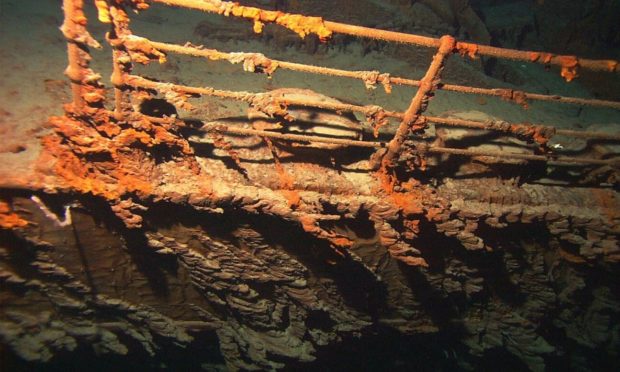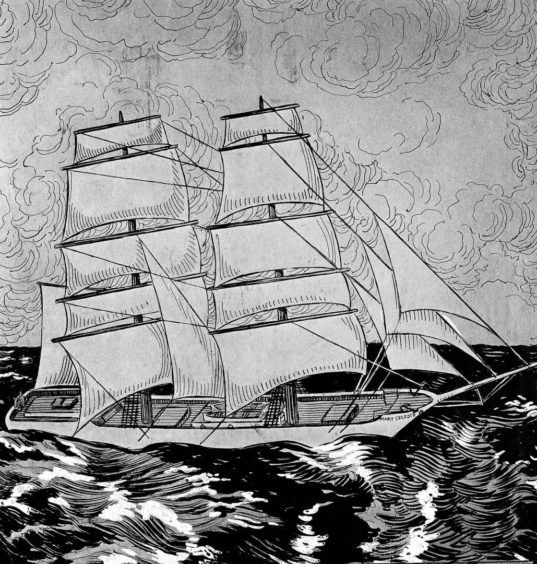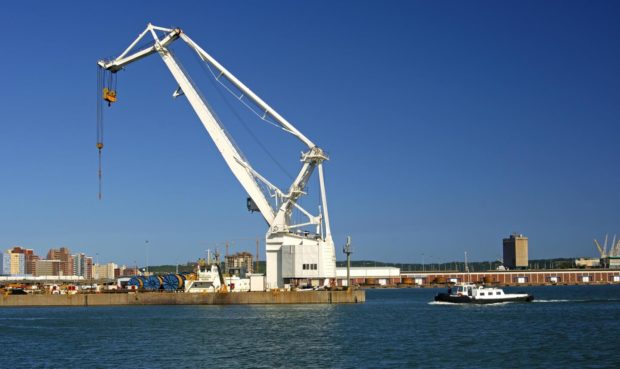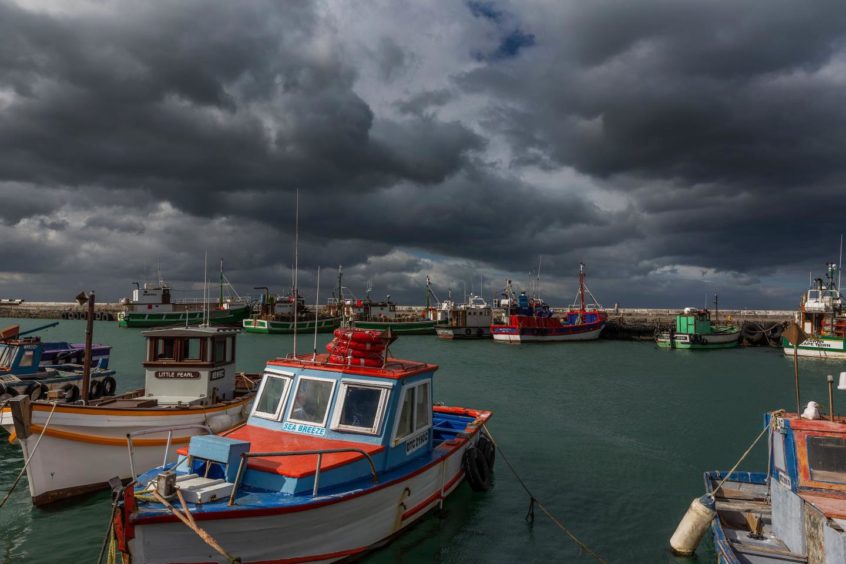The Richard King was the Dundee-built tug that figured in one of the most baffling sea mysteries of all time.
The Richard King, launched by Gourlay Brothers and Co Ltd in 1891, steered the Waratah safely out of the South African port of Durban into deep water.
The Waratah was sailing to Cape Town but she disappeared from sight into the mist with her 211 passengers and crew in July 1909.
The story of the Waratah has often been compared to that of the Titanic, which sank three years later.
As such, the Waratah has been referred to variously as the “Titanic of the Southern Ocean” and “Australia’s Titanic”.
The Richard King was one of the ships that took part in an exhaustive but unsuccessful search for the Waratah.
Numerous attempts to salvage it and a few sightings have been reported, with none proving to be true.
No one has ever found a trace of the ship and this great maritime mystery is up there with the Mary Celeste and the Flying Dutchman.
The 327-ton steam tugboat was built at the Camperdown yard in 1891.
The ownership of the Richard King was transferred to Walter Pearce from London who was an agent for the Natal Harbour Board in South Africa.
Captain John Watson, archivist for The Fraternity of Masters and Seamen in Dundee, said the Richard King was the largest steam tug of her time.
He said: “Because of its location, wide open to the effects of the mighty Indian Ocean, Durban Harbour in South Africa came to be known as having the largest and most powerful harbour tugs in the world.
“When the twin screw steam tug Richard King, built by Gourlay Brothers and Co Ltd, for the Natal Harbour Board, set out from Dundee for Durban on August 15 1891, she was at that time the largest and most powerful steam tug of her time, more than capable of assisting any size of ship to enter that harbour, coping easily with the large rolling swells that dominated the approach channel to it.
“After she had escorted the ill-fated SS Waratah out of Durban Harbour in 1909, bound for Cape Town, it is little wonder she was called upon later to search for the missing ship because had it been found that Dundee-built tug would have easily been able to tow her to a safe haven.
“Alas, that was not to be and the mystery of what happened to the Waratah still lives on today.”
The 9,333-ton Waratah became the 20th ship owned by the Blue Anchor Line and was built by Barclay Curle, shipbuilders, of Elderslie Dockyard, Glasgow.
She was launched in 1908 following sea trials on the Clyde and was designed to carry emigrants to Australia and cargo on her way home to England.
The ship was 500ft long, had a beam of 59ft and a depth of 38ft.
She had enough lifeboats for 921 passengers and could carry 15,000 tons of coal and cargo at a speed of 13 knots.
She also had a watertight compartment, like the Titanic, and was considered unsinkable.
In charge of the vessel was 69-year-old Captain Joshua Edward Ilbery, who was the Blue Anchor Line’s most experienced officer.
But was the Waratah doomed from the start?
All of the company’s steamships were named after Australian flowers.
The Waratah was named after the emblem flower of New South Wales.
One ship of that name had already been lost off the English Channel in 1848.
Then, in 1887, two ships, each named Waratah, sank off Sydney within months.
Following a cyclone in 1889, the newly-built Waratah, from the port of Fremantle, sank off Cape Preston in the Pilbara, with the loss of all crew.
Just five years later, yet another Waratah was lost in northern Australia.
‘A knight on a horse rose out of the waves…’
The Waratah’s maiden voyage, from London to Adelaide, started on November 6 1908. The ship arrived in Adelaide on December 15 and at Sydney on Christmas Eve 1908.
She was back in London on March 7 1909 before she was loaded again and started her second trip for Australia on April 27 with cargo and nearly 200 passengers.
She left Adelaide on July 7 and arrived a day ahead of schedule in Durban on July 25 and unloaded some of her cargo before proceeding to Cape Town.
One passenger, Claude Sawyer, a seasoned ocean traveller, had some reservations about its seaworthiness and got off when the ship docked at Durban.
The apparition screamed out ‘Waratah! Waratah!’ then faded.”
Newspaper account of dream of passenger on board SS Waratah
Sawyer claimed that on three occasions on the voyage he had seen a vision of a man with a sword, warning him of impending disaster.
The Daily Observer recounted Sawyer’s dream: “One night at sea, he dreamt of standing on the ship’s boat deck staring into the sea.
“Suddenly, a knight on a horse rose out of the waves swinging a medieval sword.
“A bloodstained sheet was fluttering behind him.
“The apparition screamed out ‘Waratah! Waratah!’ then faded.
“Sawyer woke up screaming in his berth.
“He couldn’t sleep after that but resolved to get off the ship at the next stop.”
Sawyer repeated his concerns to Ilbery; however, the captain saw no merit in them.
The rig of the vessel immediately brought to mind the legend of the Flying Dutchman… the phantom ship held me spellbound.”
Clan MacIntyre’s chief officer, C.G Phillips
The ship was due in Cape Town on the morning of July 29.
When it failed to arrive, it was assumed to have been delayed by the stormy seas, but when several days passed with no sign of it, tugs were sent to search for it.
The families of the 92 passengers and 119 crew of the vanished ship continued to hope that the ship would be found.
The Board of Trade inquiry into the disappearance was held in December 1910 at Caxton Hall in London.
Evidence was greatly hampered by the lack of any survivors, other than the small number, including Claude Sawyer, who had disembarked in Durban.
Alexander Smith Duthie, who was the master of the Richard King, said: “We towed the Waratah round from C shed.
“She did not lean towards us at all. She was upright at the wharf, and when we started towing her round as nearly upright as possible.
“Had she been tender she would probably have leaned towards us.
“She did not do so.”
‘I know my seafaring lore’
The Waratah headed south for Cape Town.
The next morning Waratah was spotted by the freighter Clan MacIntyre, which had departed Durban the previous day.
The Clan MacIntyre recorded in her logs that the Waratah “appeared to be perfectly upright and to be in no difficulty, steaming rapidly”.
The Waratah then picked up speed and disappeared from sight into the mist.
Clan MacIntyre’s chief officer, CG Phillips, would later tell the inquiry of experiencing a ghostly omen after losing sight of the missing steamer.
“Some hours after I had sent the signal to the liner, I was standing on the bridge when I sighted another ship, a sailing vessel,” he said.
“There was something strangely old-fashioned about her rig. I’m not a superstitious man but I know my seafaring lore.
“The rig of the vessel immediately brought to mind the legend of the Flying Dutchman…the phantom ship held me spellbound.
“It disappeared in the direction taken by the Waratah, and I had a feeling it was a sign of disaster for the liner.”
The loss without trace of the Waratah confounded almost everyone.
The disappearance of the ship resulted in the commercial failure of the Blue Anchor Line and its ships were sold to P&O before it was wound up in 1910.
Carrying provisions on board to last a year, the inquiry was of the opinion that the Waratah fell victim to a freak wave, capsized and was sucked to the ocean floor.
Shortly after the Waratah episode the Richard King was transferred to the Union Government of South Africa.
In 1938 she was sold to Imperial Airways for conversion into a floating hotel in Mozambique waters.
War followed shortly afterwards and if she did take over her new role, it didn’t last very long.















